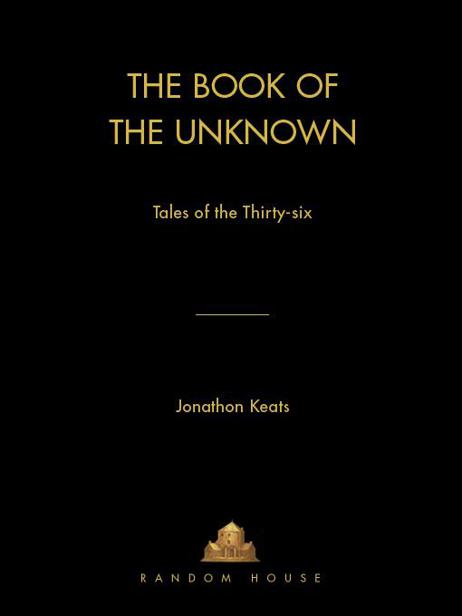
The Book of the Unknown
Tales of the Thirty-six
کتاب های مرتبط
- اطلاعات
- نقد و بررسی
- دیدگاه کاربران
نقد و بررسی

September 8, 2008
Keats (The Pathology of Lies
) re-imagines Jewish folklore in his collection of stories about the Talmudic idea of the Lamedh-Vov, 36 righteous souls who must exist at all times in order for humanity, and the world, to sustain itself. A fictional author's foreword by Jay Katz, Ph.D., summarizes the idea of the Lamedh-Vov and establishes its legitimacy by citing a list of names Katz found while excavating a German synagogue. The stories that follow—covering 12 of the 36 souls—are based on Katz's discussions with villagers. The heroes of these stories include a liar, a thief, an idiot and a whore—not your typical folk heroes. Gimmel the Gambler, for example, loses his fortune to a beautiful peasant woman with one roll of the dice; with her new riches, she's able to marry the king. The accomplishment of this book is more about stylistic mimicry than originality; Keats's ear for the language of folktales comes through nicely, though because of the stories' limited scope, they lack bite.

January 1, 2009
Adult/High School-This slender book opens with a foreword by its fictional author, Jay Katz, PhD, in which he describes how, many years earlier, he had unearthed a list of names buried deep beneath the ruins of a German city. Determined to understand just what the list might mean, he took to the road to interview local villagers, who told him that they are the names of the "Lamedh-Vov," the 36 anonymous people who must exist on Earth to make it a better place. Among them are a whore, a fool, a thief, and a gambler. Written in a folkloric style, with short lyrical sentences that incorporate some modern wording, the tales appear to be easy reads, but have a depth that creates questions that beg for discussion. They are rich with Jewish tradition, and teens who lack that knowledge may need guidance in order to fully understand them."Connie Williams, Kenilworth Jr. High, Petaluma, CA"
Copyright 2009 School Library Journal, LLC Used with permission.

Starred review from January 15, 2009
Keats seizes upon the idea of the 36 righteous ones who preserve the world from destruction by their goodnessthe Tzadikim Nistarimto offer an allegory of blessedness in a troubled world. He brilliantly turns the concept on its head, with righteous ones including a golem, a prostitute, a thief, and others whose virtues transform and surprise. All the pleasures of fiction and the advantages of spiritual reflection; highly recommended.
Copyright 2009 Library Journal, LLC Used with permission.

December 1, 2008
Keats world is a fun one. His allegorical world resembles some hybrid of Robin Hoods Sherwood Forest and Shreks moss-covered environs. Visions of cloaks and pushcarts and thatched roofs abound throughout each wonderful fable as it weaves together mysticism and conflict. Magic and exaggeration exist, not in an attempt for wizardry and the supernatural but to facilitate the human relationships within each fable. Passing from fable to fable, a recognition of something odd arises: each protagonist is likable and deserves championing. The characters are unique: a thief is encouraged, a liar rewarded, and a luckless gambler knows nothing but happiness. Each character suffers some moralistic adversity yet continues striving for goodness. Although they might stumble, they eventually find redemption and happiness. Keats characters occupy a world where goodness prevails and redemption finds the right person. Our world is not so tidy, but perhaps if characters can be good, we can be, too. This is not our world, but it is most definitely one worth reading.(Reprinted with permission of Booklist, copyright 2008, American Library Association.)

























دیدگاه کاربران